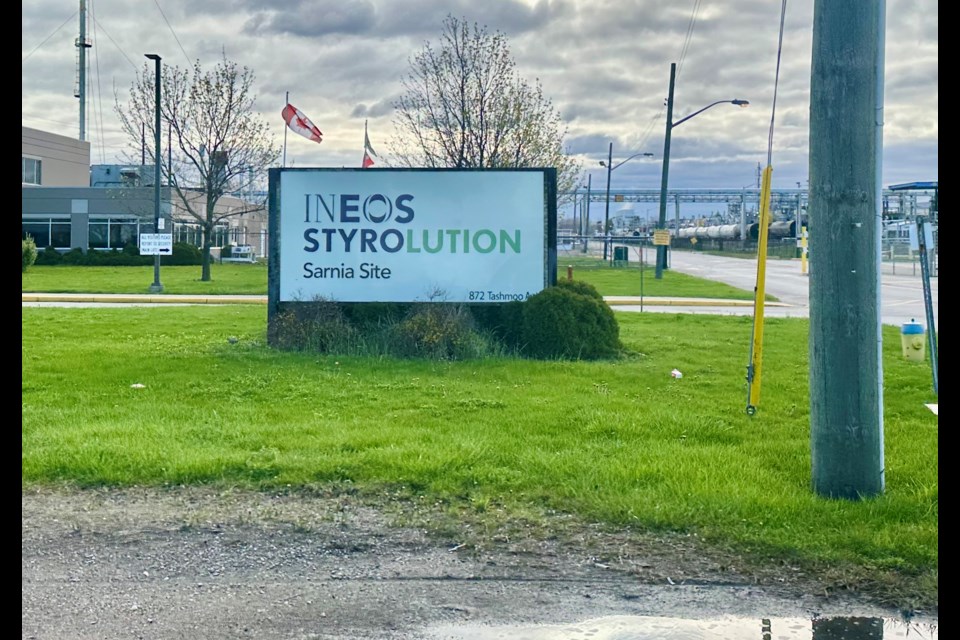Sarnia’s INEOS facility is shutting down temporarily, the company said Saturday, “to perform maintenance and address a mechanical issue.”
The announcement comes after reports of elevated benzene levels at nearby Aamjiwnaang First Nation that led to the closure of several buildings, sent multiple residents to hospital, and prompted the Chief and Council to call for an immediate shut-down of the chemical manufacturing facility.
“At INEOS Styrolution, ensuring the health and safety of our employees and community is paramount,” the company said in a statement. “We are temporarily shutting down our facility located in Sarnia, Ontario, Canada, to perform maintenance and address a mechanical issue," and will resume operations once addressed. The company says elevated flaring is expected flaring is expected this week as part of the shutdown.
Aamjiwnaang Band Council said in a statement Saturday that while they welcome the news, "we look forward to hearing additional next steps and coming to a resolution with INEOS Styrolution and the Ministry of Environment, Conservation and Parks (MECP)."
Aamjiwnaang officials issued a notice to residents Tuesday April 16, warning of “extremely high” levels of benzene, forcing the closure of buildings, including the band office, located across the road from the Tashmoo Ave. facility. Several band employees complained of headaches, nausea and dizziness; some were taken to hospital by ambulance, residents say. All buildings, except the Health Centre and Community Centre, remain closed.
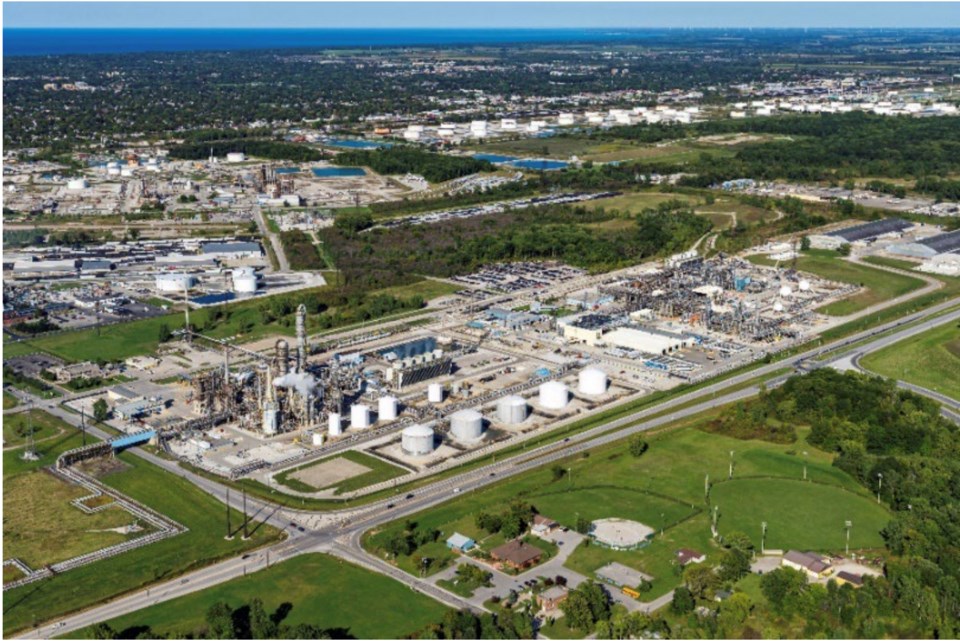
“The cause of these symptoms is directly related to the continuing and excessive levels of benzene emissions coming from the INEOS facility located directly across from the Band office, environmental office, and community playground (recreation area),” Aamjiwnaang officials said in a statement.
A community meeting was called Thursday for concerned residents, as buildings remained closed, and residents were told to close their windows and ‘exercise caution,’ to avoid the baseball diamond and playground areas, which are also located closest to the INEOS facility.
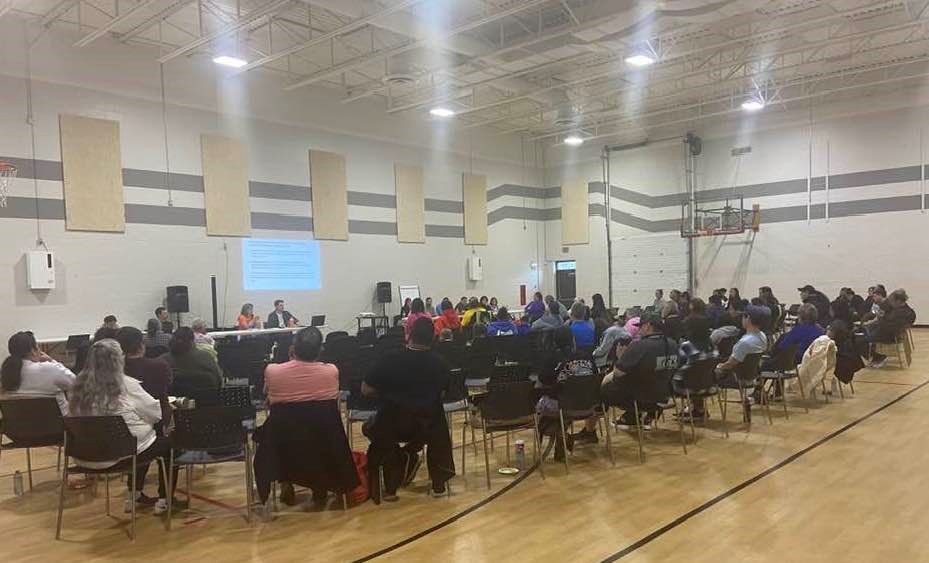
The Southwest Crisis Response Team — a mobile mental health crisis team — has been deployed to Aamjiwnaang, and residents are being urged to report any symptoms related to benzene exposure, to the Community Health Centre. The form can be accessed here.
Benzene is a volatile organic compound (VOC) that occurs naturally in crude oil. It is colourless, highly flammable, has a sweet odour, and is classified as a known carcinogen by the IARC (the International Agency for Research on Cancer).

The INEOS Styrolution Sarnia site uses benzene to produce styrene monomer — a basic building block of the plastics industry. The site’s workforce is comprised of approximately 90 full time employees and 25+ contracted trades.
No official emergency alerts were issued to the community through Lambton Alerts — which issues notices on behalf of local industry, and is administered by the Bluewater Association for Safety, Environment, and Sustainability (BASES) — or the City’s emergency management system, despite data from the Clean Air Sarnia Area (CASA) website showing benzene readings as high as 115 µg/m³, early Tuesday at the Ada (Lockridge) Rogers Monitoring station loaded near the Band Office. Ontario's annual AAQC (Ambient Air Quality Criteria) for benzene is 0.45 µg/m3
"The City of Sarnia did not issue any emergency alert in relation to an increase in airborne benzene at the Ada (Lockridge) Rogers air-monitoring station in Aamjiwnaang on April 16, 2024," Steve Henschel told The Journal earlier this week, on behalf of the City. “Ultimately, we work with local industry to monitor air quality, and rely on industry partners to notify us of any increased flaring, or operational disruptions / activities that impact air quality.
“No such notification was issued from industry to inform of us any air quality issues.”
In an earlier statement to The Journal, INEOS noted:
“We understand the concerns raised by our neighbours, including the Aamjiwnaang First Nation community, regarding benzene readings from a local station. We are carefully reviewing this data and any concerns. The site works closely with the MECP to ensure we stay within the prescribed emissions limits.”
The ministry’s mobile air monitoring Trace Atmospheric Gas Analyzer vehicle was on site for several days to conduct air monitoring in the area and “collect more specific data on local benzene emissions,” a spokesperson noted.
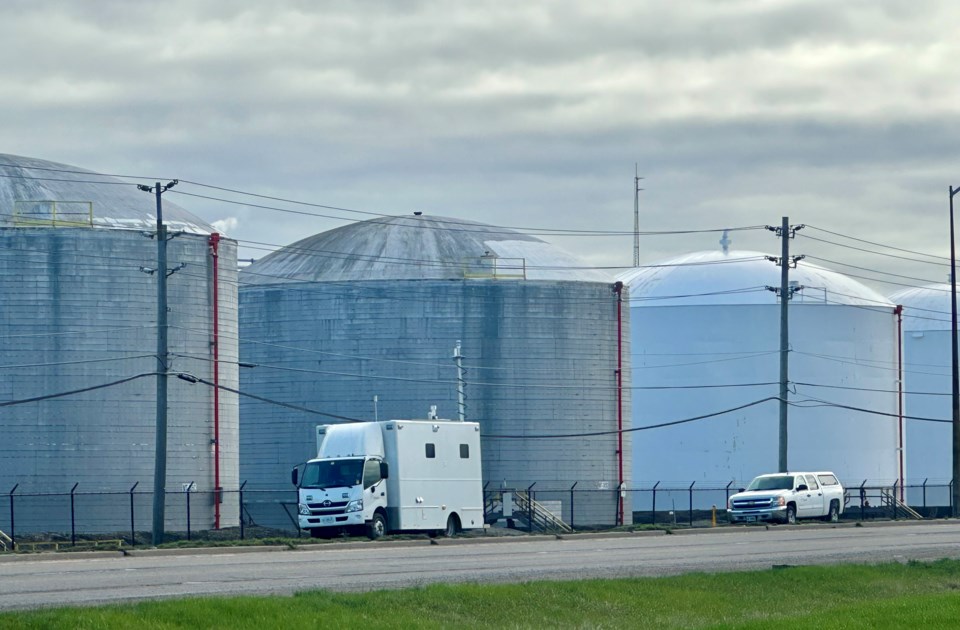
Environment Minister Andrea Khanjin spoke with officials from both Aamjiwnaang and INEOS this week, the Ministry said, “and made clear our government’s expectation that they quickly identify and reduce these emissions. When it comes to protecting health and safety, we will not hesitate to use our regulatory tools and enforcement actions to hold emitters to account.”
“As part of our continued response, Environmental Compliance Officers have been conducting site visits at INEOS…and we continue to ensure compliance with all past orders made to INEOS, including requirements to install emissions control equipment and undertake additional air monitoring.”
Results of a long-awaited health study released in March show consistently higher levels of benzene around the Ada Lockridge Rogers air monitoring station, located near the Aamjiwnaang band office.
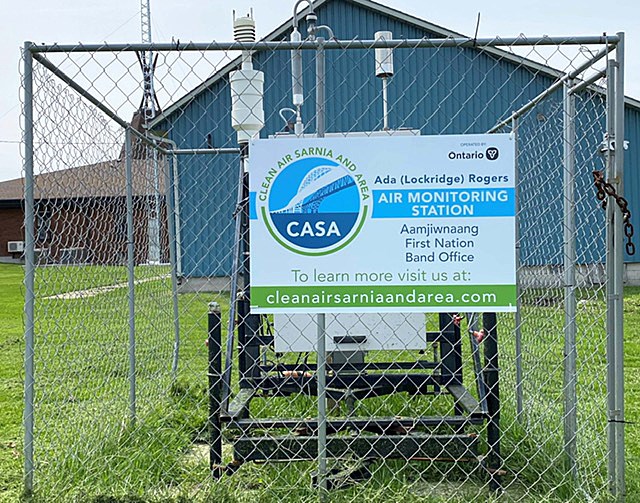
"It is important to note that measured benzene concentrations around the Ada (Lockridge) Rogers monitoring station increased in 2022 and 2023 from the previous two years, particularly with elevated benzene concentrations over short periods of time (i.e., “spikes”). This is likely due to recent higher emissions from the nearby facilities…” the report noted.
“This is extremely troubling given that there continues to be ongoing high levels of benzene measured along the INEOS Styrolution property line and at the monitor near the Aamjiwnaang First Nation Band office,” Chief Chris Plain said in a statement following the study’s release. “INEOS is already the subject of several government orders requiring it to reduce benzene emissions, but problems persist.”
